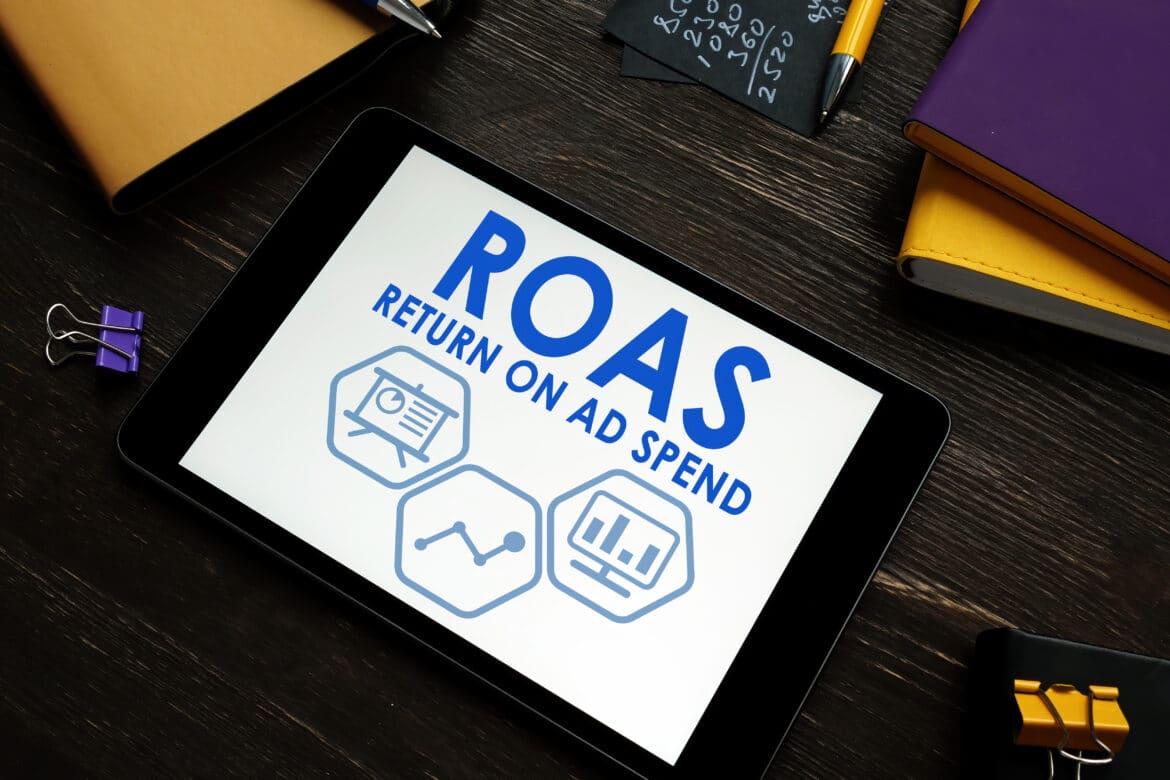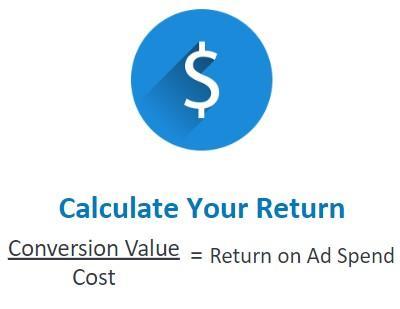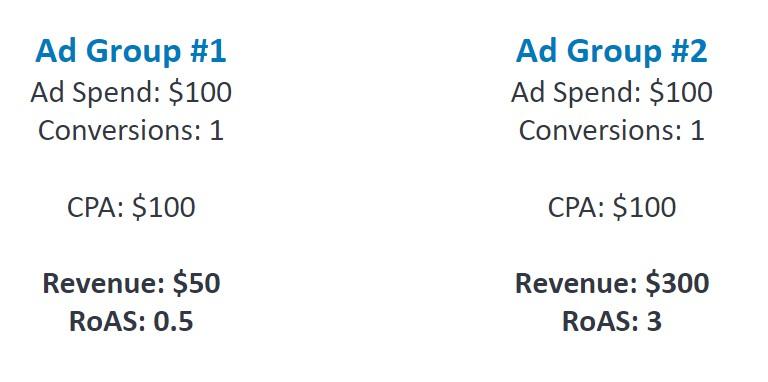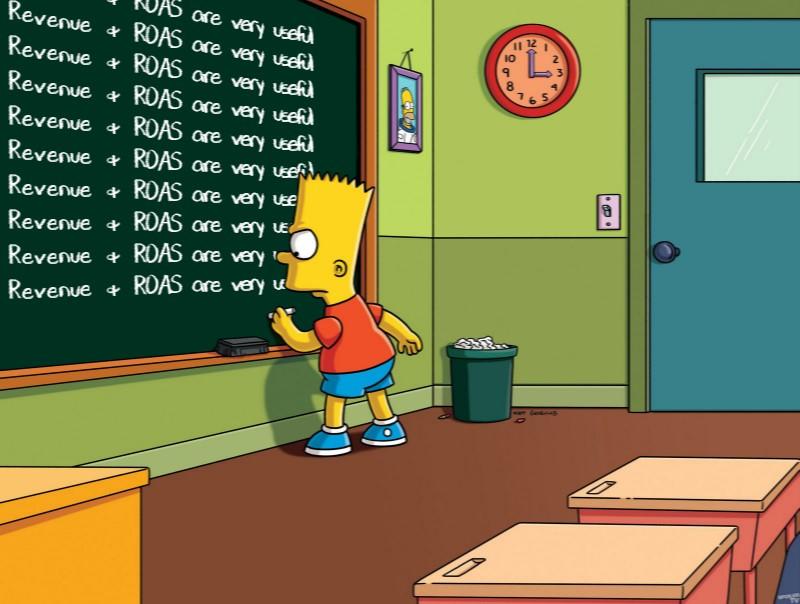What No One Tells You About Return on Ad Spend (ROAS)

Glenn Burgess
Glenn P Burgess Author, Speaker - UK's No1 Fintech & SaaS Marketing expert.

In elementary & middle school, Math had always been my number one subject. In secondary school, I began playing dream sports, investing an excessive amount of energy assessing details & matchups while things like Billy Beane’s sabermetrics were developing & getting more common.
Today, my associates know that, instead of talking about data, I’m most likely to talk about marketing strategies with my customers. While everybody may not be pretty much excited & interested as I am.
Marketers live & breathe in a serious world overwhelmed by data. We’re continuously trying to improve metrics, like Quality Score, click-through rate, or cost per conversion in paid search & we don’t investigate the bigger picture rather, we become focused on simple core metrics.
Return on ad spend, or ROAS, gives us a look at the bigger picture. This metric not only offers more noteworthy understanding of what works & leads to conversions, but also measures the income our conversions are generating.
Interesting?
Well then, keep reading & this is what you’ll be knowing when you’re finished reading this post:
- The meaning of ROAS for digital marketers
- How to calculate ROAS with a simple formula
- Why ROAS is superior to CPA
- How to use conversion value to calculate ROAS
- How to optimize your Google Ads account for ROAS
What is ROAS?
ROAS represents Returns On Ad Spend. The income that your business procures for every dollar it spends on advertising, is measured by a marketing metric, ROAS.
ROAS is basically equivalent to another metric you’re familiar with: return on investment, or ROI. For this situation, the cash you’re spending on digital marketing is the investment on which you’re tracking returns.
When we talk about ROAS on a very basic level, it estimates the effectiveness of your advertising efforts; You’ll generate more income from every dollar of ad spend, if your advertising messages successfully connect with your prospects
The higher your ROAS, the better.
Inside your Google Ads account, you can measure ROAS in different ways; the account level, the campaign level, the ad group level, etc. You can calculate ROAS as long as you keep a track of the amount that you’re spending & earning.
How to calculate ROAS: A simple return on ad spend formula
You might be wondering how difficult it would be to calculate ROAS. Fortunately, it is not. The ROAS is incredibly simple & very basic. ROAS equals to your total conversion value divided by your advertising costs.

“Conversion Value” measures the income of your business from a given conversion. Your ROAS is 5, if it costs you $20 on an ad to sell one unit of a $100 product. Thus, you get $5 back for every dollar you spend on advertising.
Why ROAS is superior to CPA?
CPA or Cost Per Conversion is a typical metric used to determine the success of a paid search campaign. While being exceptionally helpful for measuring volume of conversions, it just estimates the normal expense related with any single activity.
In order to assess the exact success in our advertising endeavors, it’s up to us as marketers to make suitable conversion actions since, not all conversions are equal.

As you can see, each ad group spent $100 & secured one conversion, giving us an identical cost per conversion of $100. We see an alternate picture when we assess the value of every conversion. From that $100 spent, we see one ad group generated $50 & the other generated $300, giving us a ROAS 0.5 & 3.0, separately.
But, how did that happen?
Well, as you’re earning less than $1 for each $1 spent, achieving a ROAS of less than one is a losing effort. The ROAS of 3.0 is showing that for each $1 we spent on ad in that ad group, we acquired $3 back from that conversion (a 200% return).
In a profit focused system, the objective is to accomplish ROAS as high as possible. Net revenue will vary by industry, yet the common benchmarks fall between a 3.0 to 4.0 ROAS, so we probably need to meet or surpass these benchmarks.
How to use conversion value to calculate ROAS?
You’ll need to add conversion values to your conversion actions in order to measure ROAS & view this metric in Google Ads.
Setting up tracking with conversion values can be accomplished with a flat value for each action or a powerful sum attached to a unique transaction. Setting up unique conversion value is frequently a clear cycle in case you’re promoting an online business.
To incorporate the transaction specific value to every conversion action, numerous shopping cart platforms have a smooth process & require only a bit of modifications in the code of your website.
A manual or flat calculating would be required in case you’re not in online business & can’t exploit transaction specific values, for example, most lead generation campaigns.

In this case, you’d need to think about post-conversion metrics, for example, the pace of you or your sales team in transforming a lead into a genuine client; just as the normal monetary value that client produces.
For a theoretical example, suppose that you do lead generation & that you close 10% of every single new lead. You would multiply the value per client by the lead/client close rate & get an estimate of $500 in the event that every one of those leads make $5,000 of value.
In this situation, a $500 CPA would prompt a ROAS of 1.0; a $250 CPA would prompt a ROAS of 2.0; a $166.67 CPA would prompt a ROAS of 3.0. I’m sure you must have gotten the pattern.
Since, you’ve sorted out this conversion value. You can assign a flat value to a particular lead generation conversion action rather than altering code on your site to make a dynamic, conversion specific value like you would with e-commerce conversion actions.
For example, a form fills & prompts Google Ads to give a ROAS to your campaigns.
How to Optimize your Google Ads Account for ROAS
You can start optimizing your account now that conversion values have been assigned. While assessing your campaigns, prior to concluding how to split out campaigns & ad groups, you ought to analyze an adequate volume of data. This means at least 100 clicks for each campaign. You might need to have a bigger data collection for assessing performance in case of any irregularity or momentary change.
Your account & campaigns ought to be segmented based on a particular offering or close group of offerings as discussed above. These campaigns ought to have products & services split out such that you can get a balanced volume & return, regardless of whether it’s a Search or Shopping campaign.
For a better understanding, have a look at the account below.

The campaign with the most noteworthy spend has the most elevated volume of conversions, but has the least ROAS of any campaign with significant spend. In this situation, this advertiser ought to dive into the campaign with the bigger spend & see what’s really working:
- Keywords with high spend & no conversions
- Search terms that lead to conversions
- Negative keywords that don’t go well with your business
- Budget Monopolization—an ad group, keywords, or related set of keywords utilizing a ton of the financial plan with lower return.
Sales-related context can result in a higher conversion rate. Frequently, offering on search inquiries that have sales related setting or expectation, i.e., “purchase,” “shop,” “online,” “sale,” or “cheap,” can bring about a higher conversion rate even on these outcomes. More noteworthy context or expectation in your keywords can be a colossal addition!
We’d need to split out a bigger, higher-spending, more general campaign into more divided campaigns with this specific account or ad group that are both more specific, logical & really lead to a better return!
To improve that bigger, less-productive campaign that is dependent on a portion of the critical strategies above, is the objective since, the lower-spend campaigns have effectively been split into their own particular subsets that lead to stronger returns.
Because of expanded spending plans of less effective campaigns, keep on investigating on your impression share to guarantee that these new, more proficient campaigns aren’t missing out on clicks.
There’s something beyond assessing search questions & the day-by-day financial plans that can be used to optimize your account. Just think about your potential audience, and audit your metrics across demographics.
Prior to making an action, will your clients will in general make different visits to your site? Add site visitors as a group of people with observation, and incorporate a positive bid modifier. Do your clients make repeat buys? Add a client list audience with observation again with a positive bid modifier.
You may even hope to make altogether separate RLSA campaigns utilizing audience targeting than perception!
Tip: Review you attribution model
Apart from the default Last Click attribution model there are multiple options for ascribing conversions, including single-touch & multi-touch models, each giving you an alternate method to assess what’s genuinely impacting your conversions.
Branded campaigns, for example, regularly have a high ROAS. As a client may have decided to purchase your item or ask about your service, they had immediately looked through your brand name before completing your tracked conversion rate.
So, you may be missing out on what actually drove that client to your site before they looked for your brand. For a future client, a broader top-of-funnel search is prompting numerous first clicks & you never knew it!
It’s ideal to see various models because those keywords may really be more significant than they initially showed up with last click.
A multi-touch attribution model with more extended conversion windows can give a more adequate understanding of which keywords are impacting conversions, as fractional conversions numbers will build, those keywords may really be more significant than they had initially showed up with the last click.
ROAS & Google Shopping Campaigns
In relation to search campaigns, shopping campaigns are somewhat unique. Since, there are no keywords, a product feed is being used ideally.
You can structure Shopping campaigns to optimize ROAS, even utilizing a Target ROAS Automated Bidding Strategy, you’ll have adequate conversion volume that can be used with proper segmentation of the product feed into different campaigns & ad groups or with exclusions for product that don’t find a way into the proper campaign/ad group.

Shopping campaigns can similarly use negatives to filter through helpless search questions & be organized such that prompts more stronger ROAS, just like the search campaigns we looked at above.
Shopping campaigns use pictures from your product feed & can show up more noticeably than text ads, have a solid conversion rate & will in general have lower costs per click than text ads. If you’ve organized your campaigns well they can be consistent source of conversions with an extraordinary ROAS.
Next, review your account
It is now time for you to dive deeper into your account, while keeping the revenue & profit in mind. ROAS shouldn’t be viewed as just an online business metric. To make smart & profitable decisions, lead generation & internet business marketers can utilize this metric.

It is critical for you to survey your own products & services to decide what a necessary ROAS needs to be for your conversions. Remember to keep the above examples in mind to refer as a benchmark.
After reading this, you should have a strong understanding of what ROAS data is telling you about your account & how to best make a move to optimize. You may have different objectives in accordance with your campaigns, but the end goal, i.e. to increase profits, remains the same.





